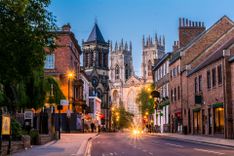7. Brick Lane
Brick Lane is known for its Bangladeshi restaurants—some of the best are simple, no-frills places that have been around for decades. The street’s been called “Curry Mile” for a reason, though locals each have their own favorite. You’ll smell the spices before you see the signs.
On Sundays, the whole area shifts gears with one of the liveliest street markets in East London. You’ll find secondhand clothes, rare records, and food from every corner of the world. The graffiti-covered walls feature everything from underground artists to pieces by Banksy, and they change constantly, so there's always something new to see.
The buildings around Brick Lane tell stories too—from the days of Huguenot weavers and Jewish bakers to today’s art studios and pop-ups. It’s a good place to come hungry and people-watch.
8. Tate Modern
Tate Modern sits right on the Thames in what used to be a power station. The building still feels industrial—huge open spaces, exposed brick—but now it’s filled with modern and contemporary art from around the world. The Turbine Hall alone is worth checking out; it's where large-scale installations take over the space in ways you don’t often see in traditional galleries.
Since opening in 2000, the Tate has made big-name artists like Picasso and Warhol easy to access, but it also puts a real focus on underrepresented voices and new ideas. The newer Blavatnik Building connects to the original space and has a London rooftop bar terrace with one of the best free views across the city. This is one of the best things to do in London.
9. Kew Gardens
Kew Gardens is a huge stretch of greenery out in southwest London. It’s not right in the center, but easy enough to reach, and it makes for a quiet few hours away from the pace of the city.
This is where you’ll find some of the best walks in London, with glasshouses filled with plants from all over—tropical rainforests, dry deserts, and cooler climates. The Palm House and the Temperate House are both worth seeing, especially if the weather’s not great.
There’s also the Temperate House, which looks like something out of a Victorian novel and holds plants from cooler parts of the world, plus the Treetop Walkway, where you can wander 18 meters (59 feet) above the forest floor. If you're visiting with kids, the Children’s Garden has loads of space for them to run around and learn about plants.
Kew’s also a working research center—they’re doing things like preserving rare seeds and studying climate resilience.














